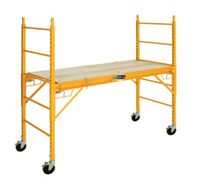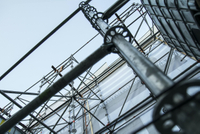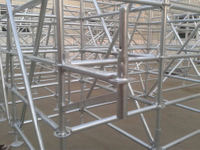Content Menu
● Understanding Scaffolding Tubes and Their Use in Auckland
● Cost Breakdown: Buying vs. Renting Scaffolding Tubes in Auckland
>> Rental Costs in Auckland
>> Purchase Costs in Auckland
>> Cost Comparison Table
● Factors Influencing Whether to Buy or Rent Scaffolding Tubes in Auckland
>> Project Duration and Frequency
>> Storage and Maintenance Capacity
>> Budget and Cash Flow
>> Project Complexity and Customization
● Practical Tips for Buying Scaffolding Tubes in Auckland
● Practical Tips for Renting Scaffolding Tubes in Auckland
● Environmental and Safety Considerations
● Additional Financial Considerations When Buying Scaffolding Tubes in Auckland
>> Depreciation and Resale Value
>> Insurance and Liability
>> Tax Implications
● Logistics and Storage Challenges of Buying Scaffolding Tubes
● Case Study: Comparing Buy vs Rent for a Medium-Sized Auckland Construction Project
● Conclusion
● FAQ
>> 1. How much does it cost to buy scaffolding tube in Auckland?
>> 2. Is renting scaffolding tube cheaper than buying for short-term projects?
>> 3. What are the storage requirements if I buy scaffolding tubes?
>> 4. Can I buy used scaffolding tubes in Auckland?
>> 5. Are there safety regulations I must follow when using scaffolding tubes in Auckland?
When planning a construction or renovation project in Auckland, one of the key decisions you'll face is whether to buy scaffolding tube Auckland or rent it. This choice can significantly impact your project budget, timeline, and logistics. Scaffolding is essential for safe and efficient work at height, but the costs and benefits of purchasing versus renting scaffolding tubes vary depending on project scale, duration, and frequency of use.
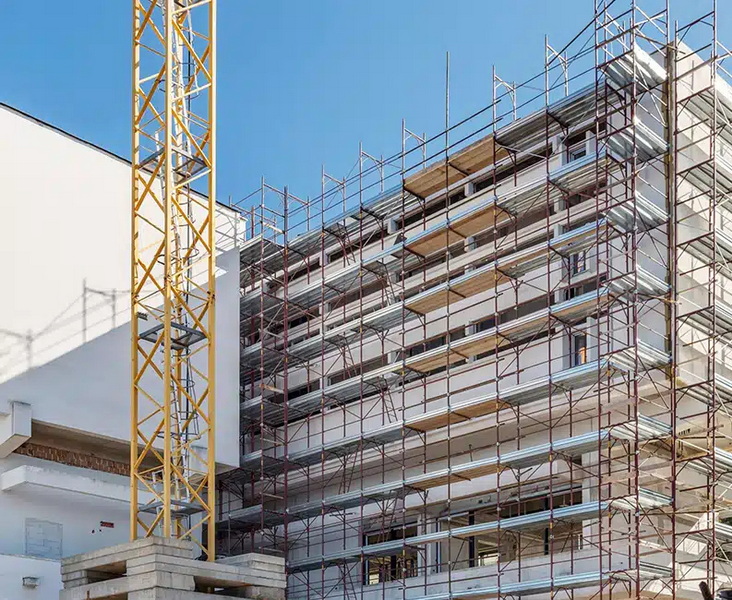
Understanding Scaffolding Tubes and Their Use in Auckland
Scaffolding tubes are steel or aluminum pipes used to create temporary platforms for construction, maintenance, or repair work. In Auckland, scaffolding must meet local safety standards and often comply with British Standard BS1139 for durability and safety.
- Buy scaffolding tube Auckland options include new and used tubes, primarily steel, which can be galvanized for corrosion resistance.
- Renting scaffolding tubes is popular for short-term projects or when storage and maintenance are concerns.
- The choice between buying and renting depends on project duration, frequency, storage capacity, and upfront budget.
Cost Breakdown: Buying vs. Renting Scaffolding Tubes in Auckland
Rental Costs in Auckland
Renting scaffolding tubes in Auckland typically costs between $20 and $50 per square meter per week, depending on the type of scaffolding, project size, and rental duration. For example:
- Small residential projects may cost $500 to $2,500 for short-term rentals.
- Medium-sized projects like multi-story homes or commercial buildings may range from $2,500 to $10,000.
- Large-scale construction projects can exceed $10,000 for long-term rentals.
Rental usually includes delivery, assembly, and dismantling fees, which can add to the overall cost but reduce logistical burdens.
Purchase Costs in Auckland
Buying scaffolding tubes involves a higher upfront investment but can be cost-effective for frequent or long-term use. Prices vary based on quality and quantity:
- Basic DIY scaffolding kits start from $1,500 to $3,000.
- Mid-range aluminum or steel scaffolding systems range from $3,000 to $8,000.
- Heavy-duty commercial scaffolding systems can cost $10,000 or more.
Owning scaffolding tubes eliminates recurring rental fees and provides flexibility but requires storage space and maintenance.
Cost Comparison Table
| Aspect | Renting Scaffolding Tubes Auckland | Buying Scaffolding Tubes Auckland |
| Initial Cost | Low (weekly or monthly rental fees) | High upfront investment |
| Long-Term Cost | Increases with project duration | Fixed after purchase |
| Maintenance & Storage | Included in rental | Owner responsible |
| Flexibility | High for short-term, less for long-term | High for frequent or long-term use |
| Logistics & Setup | Usually handled by rental company | Owner manages assembly and storage |
Factors Influencing Whether to Buy or Rent Scaffolding Tubes in Auckland
Project Duration and Frequency
- Short-term projects (weeks to a few months) generally benefit from renting to avoid large upfront costs.
- Long-term or frequent projects justify purchasing scaffolding tubes to save on repeated rental fees.
Storage and Maintenance Capacity
- Renting eliminates the need for storage space and maintenance.
- Buying requires secure, dry storage and periodic inspection and repair.
Budget and Cash Flow
- Renting scaffolding tubes spreads costs over time, beneficial for tight budgets.
- Buying requires capital investment but can reduce costs over multiple projects.
Project Complexity and Customization
- Renting offers access to specialized scaffolding types without permanent investment.
- Buying allows customization but may limit flexibility if project needs change.
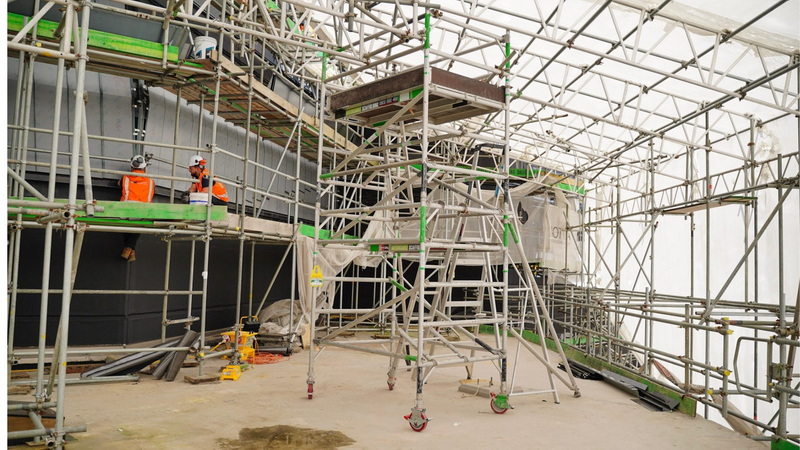
Practical Tips for Buying Scaffolding Tubes in Auckland
- Assess your project needs carefully: Calculate the total scaffolding area and duration.
- Consider used scaffolding tubes: Often available at lower prices but verify condition and compliance.
- Buy from reputable suppliers: Ensure tubes meet BS1139 or equivalent standards for safety.
- Plan for storage and maintenance: Protect tubes from corrosion and damage.
- Factor in transport costs: Delivery of purchased scaffolding tubes can be costly.
Practical Tips for Renting Scaffolding Tubes in Auckland
- Get multiple quotes: Prices vary between rental companies.
- Understand rental terms: Check for hidden fees like delivery, assembly, or late return penalties.
- Rent only what you need: Avoid over-ordering to save costs.
- Inspect scaffolding before use: Ensure tubes are in good condition and compliant with safety standards.
- Plan rental duration carefully: Extensions can increase costs significantly.
Environmental and Safety Considerations
- Renting scaffolding tubes reduces waste and environmental impact since equipment is reused.
- Buying scaffolding tubes requires responsible disposal or resale when no longer needed.
- Both options must comply with WorkSafe NZ regulations for scaffolding safety.
- Proper training and inspection are essential regardless of ownership.
Additional Financial Considerations When Buying Scaffolding Tubes in Auckland
Depreciation and Resale Value
When you buy scaffolding tubes, consider their depreciation over time. Although scaffolding tubes are durable, they do wear out, especially if exposed to harsh weather or improper storage. However, well-maintained scaffolding tubes retain good resale value. Selling used scaffolding tubes can recoup some of your initial investment, especially if they comply with safety standards like BS1139.
Insurance and Liability
Owning scaffolding tubes means you are responsible for their safety and maintenance. This may require additional insurance coverage to protect against theft, damage, or liability claims. Renting scaffolding tubes often shifts some of this responsibility to the rental company, which can be a cost-saving factor.
Tax Implications
Depending on your business structure and local tax laws, purchasing scaffolding tubes may offer tax benefits such as depreciation deductions. Renting expenses are typically fully deductible as operational costs. Consult with a financial advisor to understand which option best suits your financial situation.
Logistics and Storage Challenges of Buying Scaffolding Tubes
Owning scaffolding tubes requires adequate storage space that is secure, dry, and well-organized. Improper storage can lead to corrosion, damage, and safety hazards. In Auckland, space can be limited and costly, especially in urban areas, which adds to the total cost of ownership.
Additionally, transporting scaffolding tubes to and from job sites is a logistical challenge. You may need specialized vehicles or third-party transport services, which add to your operational costs. Renting scaffolding tubes often includes delivery and pickup, simplifying logistics.
Case Study: Comparing Buy vs Rent for a Medium-Sized Auckland Construction Project
Project Details:
- Duration: 6 months
- Scaffolding area: 300 square meters
- Frequency of future projects: 2-3 per year
Renting Cost Estimate:
- $35 per square meter per week
- Total rental cost ≈ $35 × 300 × 26 weeks = $273,000 (including delivery and assembly fees)
Buying Cost Estimate:
- Purchase scaffolding tubes for 300 sqm ≈ $50,000
- Storage and maintenance ≈ $5,000 per year
- Transport and handling ≈ $3,000 per project
Analysis:
For a single 6-month project, renting is more expensive. However, if you plan multiple projects per year, buying becomes more cost-effective over time, especially if you can efficiently manage storage and transport.
Conclusion
Deciding whether to buy scaffolding tube Auckland or rent depends largely on your project's scale, duration, frequency of use, and budget. Renting is generally more cost-effective for short-term or one-off projects, offering flexibility and reduced logistical burdens. Buying scaffolding tubes, while requiring a larger upfront investment, can save money over time for contractors or businesses frequently using scaffolding.
Additional factors such as storage availability, maintenance capacity, insurance, and tax implications should also influence your decision. By carefully evaluating your project needs, storage capabilities, and financial situation, you can choose the option that best balances cost, convenience, and safety. Always ensure that any scaffolding tubes you buy or rent comply with local safety standards such as BS1139 and WorkSafe NZ regulations.
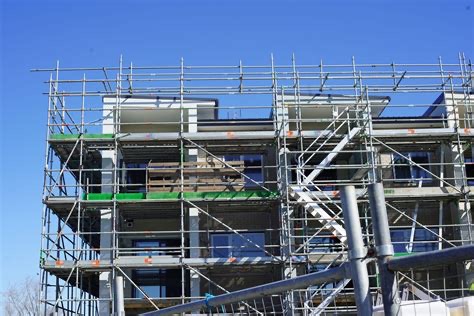
FAQ
1. How much does it cost to buy scaffolding tube in Auckland?
Buying scaffolding tubes in Auckland can range from $1,500 for basic kits to over $10,000 for heavy-duty commercial systems, depending on quality and quantity.
2. Is renting scaffolding tube cheaper than buying for short-term projects?
Yes, renting is usually more cost-effective for short-term projects as it avoids large upfront costs and includes maintenance and delivery.
3. What are the storage requirements if I buy scaffolding tubes?
You need a secure, dry storage area to prevent corrosion and damage, along with regular maintenance and inspections to ensure safety.
4. Can I buy used scaffolding tubes in Auckland?
Yes, used scaffolding tubes are available at lower prices but must be inspected for compliance with safety standards like BS1139 before use.
5. Are there safety regulations I must follow when using scaffolding tubes in Auckland?
Yes, all scaffolding must comply with WorkSafe NZ regulations, including proper assembly, inspection, and use of certified components.












